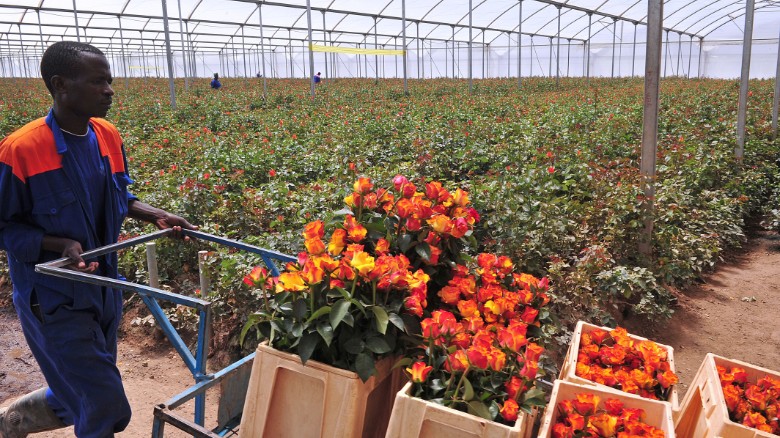Kenya is a country located in Eastern Africa, along the coastline of the Indian Ocean. Mountain highlands, the Great Rift Valley, tropical savannah and Lakelands characterize it. The country is geographically diverse as it encompasses Mount Kenya, the country’s highest mountain, and a diverse wildlife filled with the Big Five, rhinos, buffalos, flamingos, and zebras, to name a few. Kenya has a relatively large population of 46 million, it is estimated that the population increases by an average of 1 million per year. The official currency is the Kenyan Shilling and the main languages are Swahili and English.
In the northwestern region of Nairobi, Kenya’s capital, Lake Naivasha, the second largest freshwater lake in the country is found. The lake has an altitude of 1,890m above sea level, located by the Great Rift Valley, and expands roughly over 140 squared kilometers. The size and location of Lake Naivasha makes it the primary source of drinking water, income, and employment for the Kenyan citizens in the vicinity; this is posing drastic negative impacts for the lakes ecology.
For various years, Kenya has found itself in the midst of a water crisis. For a country with a large agricultural sector, only a limited portion of the land is most favorable for agriculture. With a lack of solid infrastructure, the delivery of water to the vast areas of the country is unequal. Therefore, a majority of the population struggles to obtain fresh water. Paul Karanja, the mayor of the town surrounding Lake Naivasha stated that the town’s population increased drastically from approximately 6,000 in the 1980’s to 240,000. With an increase in population, lower-class citizens are forced to migrate to rural areas that lack sanitation and clean water, leading to an increase in threatening health conditions.

Above is an image showing one of the various floriculture farms around lake Naivasha. A major part of the industry is driven by foreign investment. The Kenyan government exerts a great deal of energy and resources that are directed towards the well-being of foreign investors, by making sure to maintain their high quality of life. On the other hand, the local population struggles to sustain access to a basic quality of life due to the exploitation of labor and low wages. Kenya appears to be the paradise for the cut flower industry as they hold large shares of the market economy, are guaranteed low-cost labor from locals, experiences steady increase in value and export demand, and lastly they face only slight environmental enforcement.

The death of approximately 1,000 fish during early 2010 revealed the poor conditions of the lake. According to the government, the death of these fish was a result of low oxygen levels, while other experts argue that the floriculture industry may have had an impact. The English biology professor, David Harper, argues that the numerous farms around the lake’s shore are held responsible for half of the water extracted from Lake Naivasha. Excessive chemicals and fertilizers from local farms are washed into the lake during rainy seasons; this leads to eutrophication, causing algal blooms.
Kenya’s semi-arid and sunny climate, its central location, and its high levels of foreign investment establish the ground roots for cut-flower production. The main pressures put on the lake affecting the state of the environment are high levels of water reductions, emissions and chemical waste run-off from foreign and locally owned farms, and population growth. As a result of these pressures, the state of the environment and ecology is altered, as new invasive species are introduces while others are slowly decreasing in population. The lakes water levels are experiencing abnormal variability and pollution is affecting its natural equilibrium. In order to combat this non-sustainable industry, the Kenyan government established the National Environmental Management Authority, and the Ministry of Environment, in order to avoid any interactions that may negatively affect the lakes ecology.